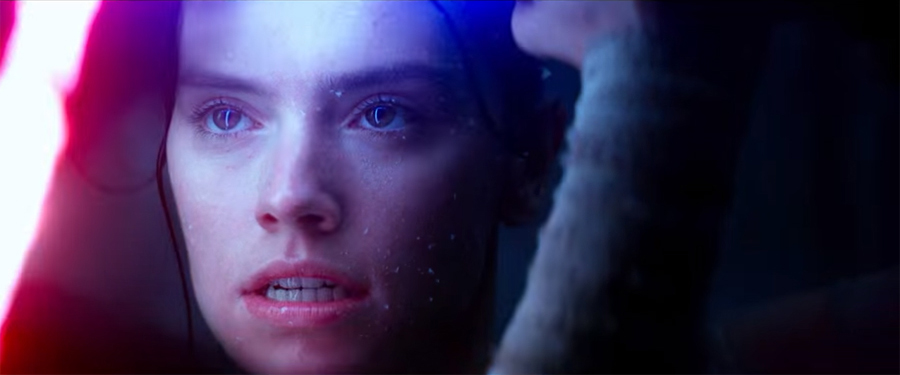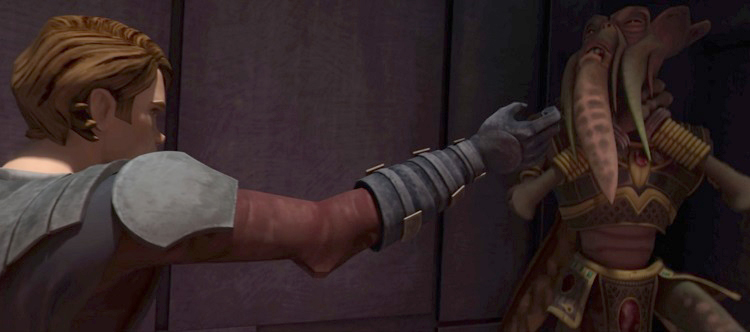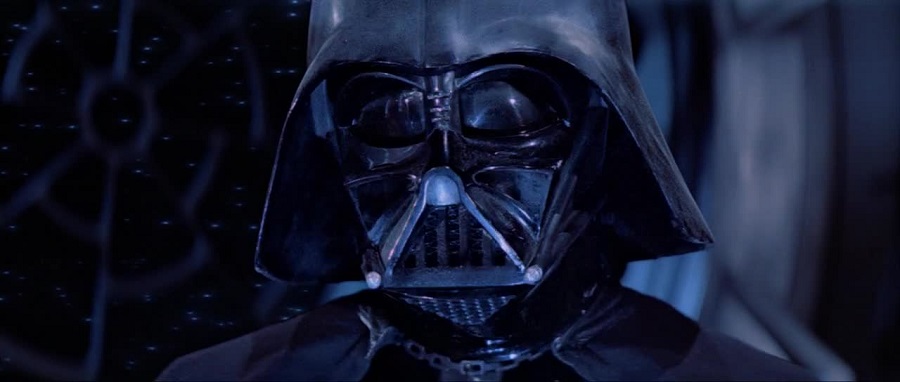
The concept of a Gray Jedi—one who walks the line between both the light and the dark sides of the Force—is popular among many in the Star Wars fan community. And I don’t blame them! After seeing the dogmatic, stuck-up Jedi of the prequel trilogy, who wouldn’t want to add a bit more of the passionate flair characteristic of the dark side? And why shouldn’t Jedi be allowed to use some Force lightning on their foes every now and then? In our postmodern era, with anti-heroes like Batman and Deadpool, doesn’t it seem that a strict adherence to the light side is a bit…old fashioned?
Yet while at first glance the existence of a Gray Jedi seems possible, and maybe even admirable in theory, I will argue that the canonical Star Wars universe leads us to reject this possibility. A Force user who willfully attempts to use both sides of the Force over the long term cannot hope to maintain their internal moral compass—ultimately they will fall.
Allow me clarify one thing from the beginning: the term “Gray Jedi” is also sometimes used to describe nonconformist Jedi like Qui-Gon Jinn whose views distanced them from the Jedi High Council. But while Qui-Gon may have been nontraditional, he shows no evidence of ever dabbling with the dark side (whichever Jedi first described him as “gray” likely used this term to solely to marginalize him and his unorthodox views). For the purpose of this essay, lets assume a “Gray Jedi” is any Force user who believes they can tap into both the light and dark sides of the Force and yet not succumb to the dark side.
One thing that would seem essential for Gray Jedi is that, while they dabble in both the light and the dark, their actions are intended to benefit the greater good of the galaxy. In other words, the ends justify the means—a Gray Jedi is a being who’s willing to get their hands a bit dirty so that the rest of the galaxy can live their lives in peace! Yet, within the whole of the current Star Wars canon, I do not believe there exists a single instance where a Force user wields the dark side in a manner that can be described as mainly positive. Even dark acts that seem good for the galaxy—say, Anakin’s execution of a war criminal like Count Dooku—are portrayed in a negative light, whether through dialogue, background music, or broader characterizations.

Think of the “Force choke” power. One of its earliest uses (chronologically) is in the eighth episode of season two of The Clone Wars. Here, Anakin chokes Poggle the Lesser to force him to reveal the secret to defeating the Geonosian brain worms. Surely this is a justifiable use of a dark side power! Yet while the result seems positive—Poggle reveals the information—the act is clearly portrayed as evil with the “Imperial March” theme playing in the background. Every subsequent use of the power seems easier, more reflexive, and more evil for Anakin, until ultimately he is choking his pregnant wife until she falls down unconscious onto a filthy landing platform.
Moreover, if it were possible to use dark powers for the benefit of the galaxy, then why didn’t Anakin use a dark side power to defeat the Emperor in Return of the Jedi? After all, slowly walking over, physically lifting old Palps up, then tossing him down a nearby shaft surely seems a bit harder than simply tapping into some quick anger to use a straightforward Force-choke on the Emperor’s wrinkled throat. I believe that a big piece of Anakin’s redemption involves not just saving his son and turning against the Emperor, but doing so without the aid of the dark side. Likewise, that’s why it’s so important that Luke does not kill the Emperor out of anger, but rather tosses his lightsaber aside. Luke and Anakin do not overthrow the Sith by being gray, they eliminate the darkness by being light!
Or consider the characterizations we see in lightsaber duels. Anger, however justified or useful it may be in a fight, is portrayed in the films as negative, while characters who remain calm and collected at the most crucial moments are portrayed positively. Think of the contrast between Qui-Gon meditating in The Phantom Menace and Anakin rushing in to defeat Dooku in Attack of the Clones. Finn’s fury in his duel against Kylo Ren stands out as an exception that proves the general rule: it seems acceptable for Finn to tap into his negative emotions, since as an apparent non-Force-user he need not beware the dark side. But for Rey the danger is more present and we can see (or at least read in the screenplay) her feelings of temptation as she stands over the wounded Kylo:
“And she could kill him — right now, with ONE VICIOUS STRIKE! But she stops. Realizing she stands on a greater edge than even the cliff — the edge of the dark side. The earth SHAKES. The earth splits. A gully forms.”
In The Force Awakens, it is no more possible to tread the line between light and dark than it is possible to step over the edge of a cliff and not fall.
Ironically, the closest example we may have of a Gray Jedi in the current canon is Kylo Ren. Before watching TFA, I assumed that Kylo Ren’s seduction to the dark side involved a slow and steady corruption by Snoke, fully extinguishing the light within him. Yet the Star Wars Character Encyclopedia challenges that view of Kylo, when it describes him this way:
“Though Kylo can use the Force, he is no Jedi or Sith. He follows his own path, encouraged by Supreme Leader Snoke to use the heritage of both the light and the dark sides.”
Based on this description alone, Kylo Ren fits the textbook definition of a Gray Jedi. Yet Kylo is far from balanced; from his violent outbursts to his wild lightsaber style, everything we can see shows that mixing dark and light is simply not possible. Indeed the Character Encyclopedia continues in stating, “These contradictory disciplines create a great conflict within Kylo.”

Every canonical character who meaningfully dips into the dark remains in the dark, either forever, or until they experience a significant moment of redemption. Anakin Skywalker, Kylo Ren, Quinlan Vos…even Luke comes dangerously close to falling, which is surprising given how minor his steps towards the dark seem. While it is possible to be redeemed, this can only occur by rejecting the darkness and turning to the light. “Balancing” the two sides of the Force within oneself as a “Gray Jedi” simply does not seem possible.
Perhaps some fans might agree with my argument but think that having a Gray Jedi who actually remains truly “gray” would be an improvement to the current universe. They may very well be right, and perhaps we’ll see a character successfully mix the dark and the light in the coming years. Of course, the Legends universe featured at least a few examples of legitimately Gray Jedi who did not fall into the dark. Whether or not that would be a compelling story element to bring over to the current canon, I’m not sure. But it does seem clear to me that the current story arc is not bending that way.
Ultimately that’s because, while SW has some nuanced characters and conflicts, at its core it is a story about good versus evil. Considering how Buddhist and Daoist influences abound, for better or worse the canonical series is surprisingly traditional in its embrace of a zero-sum Manichean morality. We cannot not think of the dark side as a paint that can be toned down to a pleasant charcoal as long as it’s “balanced” with a mix of the light; rather it is a seductive cancer that is deadly unless firmly rejected and overcome by the light.

Excellent article. It’s not white and black where you can mix… it’s light and dark… and where there is light, it drives away darkness. Hence Leia’s note to Han – there is still light in him. Light that seeks to drive away the darkness.
I agree entirely with the author – I hope the new canon can avoid including some sort of “gray” Jedi who can use the Dark Side without consequences. Star Wars doesn’t need to try to be Game of Thrones for it to be good or relevant.
In general, I think the problem with Star Wars is not that it needs morally-ambiguous Dark Siders who can tap into their hatred without becoming monsters. The bigger problem is that Star Wars has never really figured out how to do interesting yet reasonable conflict between the good Force users, i.e. the Jedi. There are a few exceptions; the young Obi-wan novels that came out around Episode I had some interesting material in this regard, as did the final season of “The Clone Wars.” However, as noted above, the most we get from the Prequels is the hints about Qui Gon’s heterodoxy, and how this means he will never be able to sit on the Council, but the details of this dispute between presumably-reasonable parties remain vague. Instead, we always get the same old dogmatic Jedi Order, where everyone is either an incapable brainwashed drone or a dark-and-edgy Mary Sue rebel. KOTOR, SWTOR, the Bane novels, the Prequels, and FotJ all tell this exact same story. As a consequence of this insistence on narrative similarity (even across periods that are supposedly thousands of years apart), the Jedi are almost always left holding the Idiot Ball, in a way that by the end of Legends threatened to make them fundamentally uninteresting.
Fortunately, we’re in a New Canon now, but I hope that the new material can avoid the pitfalls of the old. Telling different stories about the Jedi doesn’t require that they embrace the Dark Side as “gray Jedi;” rather, it should begin from the principle that even good people needn’t always agree. What happens when Jedi legitimately disagree with each other over how best to proceed (not just in the hackneyed “kumbaya” vs. “KILL EVERYONE!” dynamic of previous material)? How do the Jedi arbitrate disputes between their members? What are the consequences of interpersonal differences within the Jedi as a whole? What does it mean to be a Jedi, and who gets to decide? There’s a whole set of questions that to my knowledge existing material has only touched on in the most perfunctory and heavy-handed way.
Really enjoyed this editorial! Having “gray” Jedi will not make Star Wars better; having *interesting* Jedi will make Star Wars better.
Lots of great points! I definitely hope we see a more nuanced New Jedi Order eventually. A lot of the Legends canon (and let’s face it, even TCW and the PT) was restrained by the fact that it’s portraying an Order that’s supposed to be deeply flawed. But the margin of error for someone trained by Luke will be much narrower.
“Having ‘gray’ Jedi will not make Star Wars better; having *interesting* Jedi will make Star Wars better.”
Totally agree. Using the conflict between the dark side and the light as the only character development is what stunted a lot of the EU (now Legends) works in my opinion. Interesting characters need to be interesting people first, and Force-users second.
Two of the more interesting ideas that were late coming to the EU and then wiped out of existence were the original Je’daai of Tython and the Imperial Knights of the Fel Empire.
The Je’daai pursued a path of balance, neither light nor dark. Ultimately, the approach became unsustainable and the order was reorganized as the Jedi. The logic being a being too close to the dark side was too much of a risk to civilization.
The Fel Knight on the other had, has questions of Light and Dark replaced with Loyalty to the Emperor and the Empire. It would have been interesting to see that organization with more development. If the Emperor fell to the Dark Side would the guard be obliged to terminate the Emperor.